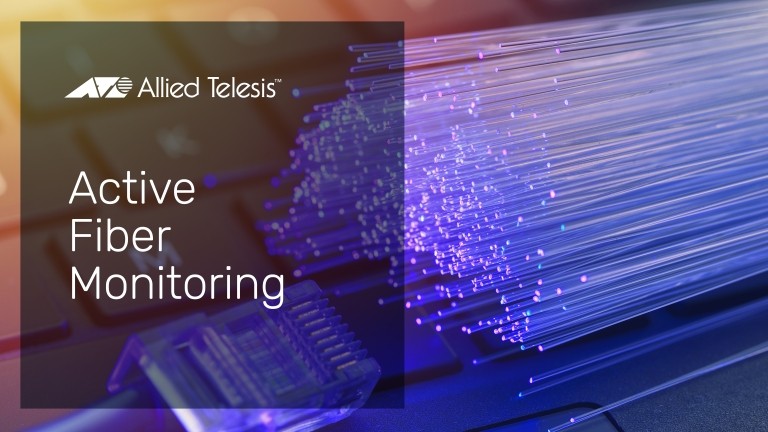
Intelligent Video Surveillance: Recent Trends And What Lies Ahead
Video surveillance systems, aka Closed Circuit Television (CCTV), are extensively deployed in a variety of settings, including public areas, public infrastructures, commercial buildings and more. In most cases, they are used for a dual purpose: for real-time monitoring of physical assets and spaces and to review collected video information to identify security indicators and plan security measures.
Even though video surveillance systems have been an integral part of the public and security sectors for decades, there is a significant interest in them outside of those industries. This interest is largely due to increased crime rates and security threats all around the globe, which are driving a continuous growth of the video surveillance market. According to a recent report by Mordor Intelligence, the video surveillance market was valued at $29.98 billion in 2016, and is expected to reach a value of $72.19 billion by 2022. This market potential is also propelled by recent advances in IT technologies—boosting the intelligence, scalability and accuracy of video surveillance solutions. What drives the main technology trends of video surveillance? How can you best put them to use?
The evolution of video surveillance systems is driven by the following technology trends:
Intelligent and Context-Aware Video Data Collection
Recent advances in signal processing enable the development of intelligent video surveillance systems, notably systems that can flexibly adapt the rate of video data collection. In particular, whenever a security incident indicator is detected, the rate of data collection is increased in order to provide richer information for more accurate and credible analysis.
Big Data Infrastructures
State-of-the-art Big Data infrastructures have opened new horizons for storing and accessing video data that are characterized by the 4Vs of Big Data: Volume, Velocity, Variety and Veracity. In particular, collecting immense data volumes from multiple cameras, including streaming data with high ingestion rates, is now much easier than it’s been in the past. Big Data systems provide the means for creating and implementing video surveillance architectures that scale in a seamless and cost-effective way.
Data Streaming Systems
During the last couple of years, many streaming systems have emerged. The latter provide functionalities for steams management and streaming analytics while being an important part of the previously discussed Big Data systems.
Predictive Analytics and Artificial Intelligence (AI)
2016 and 2017 were important years for the history of Artificial Intelligence, due to the emergence of disruptive deep learning approaches, like the ones employed by Google’s Alpha AI engine. The evolution of deep neural networks can be directly exploited in video surveillance systems to endow them with exceptional intelligence and enable more effective surveillance processes. For example, AI can enable predictive analytics, which allows security operators to anticipate security incidents and proactively prepare for them.
Drones and the Internet of Things (IoT)
The blending of IoT devices and smart objects with video surveillance systems will be also a key to providing the next generation of security and surveillance functionalities. In this direction, Unmanned Aerial Vehicles (UAVs) (i.e. drones) are nowadays deployed in order to provide video surveillance versatility and functionalities that are hardly possible based on conventional fixed cameras.
Integrating Physical and Cyber Security
The ongoing digital transformation of industrial assets and processes is gradually leading to a convergence of physical and cyber security measures. Video surveillance systems play a key role in this convergence since they represent IT infrastructures that can be used to monitor physical areas. Hence, they can be flexibly integrated with other cybersecurity systems towards a holistic and integrated approach to security and surveillance.
Architecting Video Surveillance Systems
The above-listed technologies open new horizons in the development, deployment and operation of intelligent video surveillance systems. But it’s up to the developers and deployers of video surveillance to integrate and fully leverage the functionalities of these technologies. To this end, it’s important to devise and implement a proper architecture for your video surveillance infrastructure. Modern video surveillance system architectures follow the edge/fog computing paradigm, to process video information closer to the field. This allows them to economize on bandwidth and perform real-time security monitoring. Cameras are deployed at the edge of the network as part of edge nodes that are able to capture and process video frames. Edge nodes are also able to implement data collection intelligence, through tuning frame rates based on the identified security context. Moreover, they are connected to a cloud infrastructure, where information from multiple cameras are connected, reviewed and analyzed at coarser time scales.
Edge/fog computing architectures are also the ideal choices for supporting the blending of video surveillance with the presented technologies. IoT drones need to be integrated with appropriate edge nodes as part of a mobile edge computing architecture. Real-time streaming analytics have to be performed at the edge, rather than at the cloud of the video surveillance deployment. Deep learning functionalities can be deployed at both the edge and the cloud layer. Deep neural networks at the edge can support the extraction of complex security patterns in real-time. At the same time, the extraction of security patterns and knowledge about large areas that are covered by many edge nodes (e.g., city-wide deployments) is only possible through the deployment of deep learning at the cloud. In general, it’s quite challenging to decide whether some functionalities should be placed in the cloud or at the edge. Relevant decisions are usually associated with the resolution of trade-offs (e.g., speed of processing vs. accuracy of processing for some surveillance function).
Video surveillance systems could benefit from open architectures from multiple hardware vendors. This is due to the fact that a surveillance solution can comprise different video capture devices and modalities (e.g., high-definition cameras, wired and wireless cameras, cameras in drones/UAVs and more). An open architecture can provide flexibility, deployment ease and technological longevity. Recently, there have been efforts to introduce open, standards-based architecture for edge/fog computing to present video surveillance as one of the primary uses of fog computing.
Challenges and Deployment Best Practices
Beyond the specification of a proper edge computing architecture, video surveillance system deployers have to deal with other challenges as well. One of these challenges concerns the safeguarding of privacy and the adherence to data protection regulations. Indeed, the deployment of surveillance sensors is subject to laws and directives about privacy and data protection, which sometimes impose limitations on the nature and scale of the deployment. Likewise, the use of drones should be also compliant to relevant regulations.
Another challenge concerns the level of automation of the solution. While automation is in general desirable to cover and monitor wider areas without additional human resources, human review and intervention is still key to the reliability of the overall solution. Moreover, one more challenge relates to new threats that could stem from the cyber-physical nature of video surveillance systems. A physical attack could be accompanied by a cyber attack on the video surveillance infrastructure, as a means of compromising the ability of the latter to detect the physical security incident.
One more challenge concerns the implementation of data-driven intelligence (i.e. as part of predictive analytics and AI), which requires large volumes of data with security incidents that are hardly available. AI at the edge (e.g., lightweight and efficient deep neural networks) is still in its infancy, despite the emergence of innovative startups with edge AI products and services.
In order to confront these challenges, developers and deployers of video surveillance solutions need to better comply with standards and regulations, while also adopting a gradual/phased deployment approach. The latter should enable a smooth transition from manual i.e. human operator mediated systems to fully automated visual surveillance based on AI. A gradual deployment of data-driven intelligence is also required, starting from simple rules and moving to more sophisticated machine learning techniques that could detect more complex, asymmetric attack patterns. Another best practice is the deployment of open architectures that can accommodate both future and legacy surveillance sensors, as a means of leveraging advanced functionalities at the best value for the money. Overall, modern video surveillance solutions can be very innovative, as they can comprise leading edge IT and networking technologies.
What’s the best way to upgrade or deploy your own video surveillance infrastructure? Start with detailed description of your security and business requirements and a reliable technology partner that will integrate and deploy the system on your behalf and the sky is the limit.
Related



